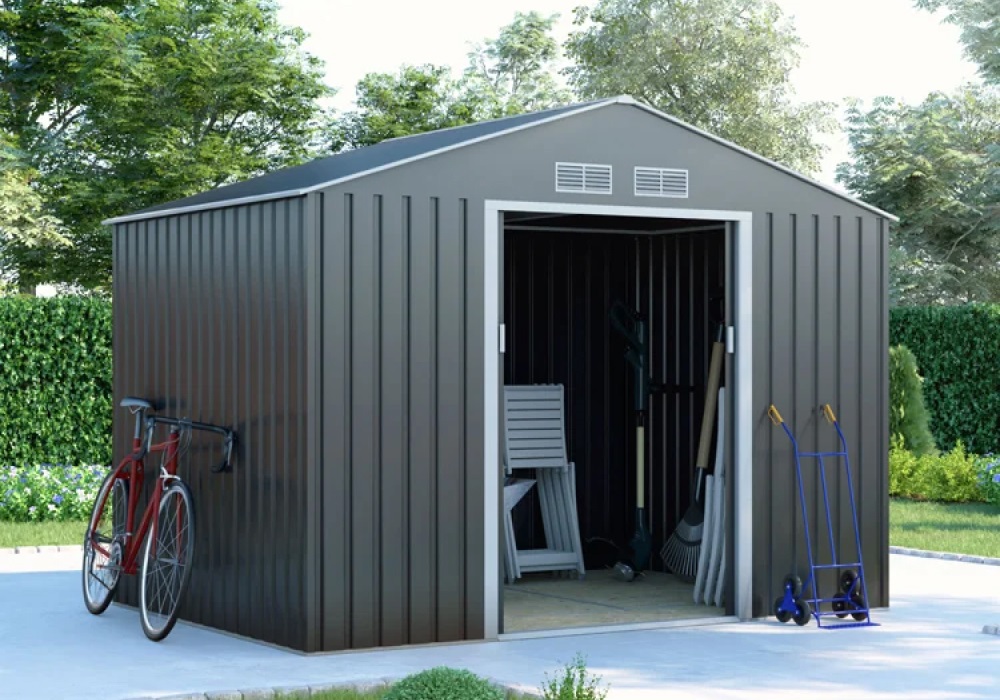
Fully Qualified Builder

3-6 Weeks of Delivery Time

Fully Customisable Roof

Guaranteed All Parts Delivered Undamaged
Residential Sheds
Utilise your outdoor space with premium garden sheds
It’s time to enhance your outdoor storage solutions.
Discover premium garden sheds designed to elevate your outdoor storage needs. At Shed Barn, we offer a wide range of durable and stylish sheds to suit every requirement.
Crafted from high-quality materials, our products are built to withstand Australia’s diverse climate conditions. From compact storage units to spacious workshops, our collection caters to various sizes and purposes.
With a Lysaght 20-year warranty, our products are built using only 100% Australian-made steel, ensuring strength and longevity. With 22 colour options and custom pitched roofing, you can choose the size, style, and features that best fit your requirements.
We also provide free access to 3D shed builder and professional installation services to ensure a seamless experience. To learn more, speak to a shed specialist and get your obligation-free quote today!
What Are the Best Types of Garden Sheds?
When it comes to choosing the best type of garden sheds, it largely depends on your specific needs and preferences. However, here are a few popular options that you might consider:
Steel: Known for their durability and strength, Australian-steel is the best choice for Australian gardeners. They offer excellent protection against harsh weather conditions, pests, and fire. They are available in various sizes and designs, providing ample storage space for your gardening tools and equipment.
Timber: If you’re looking for a more natural and aesthetically pleasing option, timber is a great choice. They blend seamlessly into garden environments and can be customised to match your garden’s style. Timber offers good insulation properties and are ideal for storing gardening supplies, outdoor furniture, or even serving as small workshops.
Vinyl: Vinyl is gaining popularity due to their low maintenance requirements and durability. They are resistant to rust, rot, and insects, making them a long-lasting option. Vinyl comes in different sizes and styles, offering ample storage space and easy assembly.
Plastic Resin: Lightweight and easy to assemble, plastic resin is perfect for those who prefer convenience. They are weather-resistant, require minimal maintenance, and are often available in modular designs that can be expanded if needed.
Looking for more premium shed options?

How Much Do New Garden Sheds Cost?
The cost of garden sheds can vary significantly depending on several factors such as the size, material, design, features, and brand.
Generally, smaller and basic options can range from $10,000. Larger and high-end options with advanced features or specialised designs can go up to $150,000.
Benefits of Garden Sheds
| ✔ Ample Storage Space
Garden sheds provide dedicated storage space for your gardening tools, equipment, and supplies. They help keep your garden organised and free from clutter, making it easier to find and access the items you need. |
✔ Protection and Security
They offer protection against the elements, keeping your tools and equipment safe from rain, sun, and other weather conditions. They also provide a secure storage solution, deterring theft and keeping your valuable gardening assets protected. |
✔ Customisation Options
They can be customised to suit your specific needs. You can add shelving, hooks, and racks to maximise storage efficiency. Additionally, you can choose from various sizes, designs, and materials to match your aesthetics and personal style. |
| ✔ Versatility
With 22 colour options available, they can be transformed into workshops, potting sheds, or hobby spaces, providing a dedicated area for your creative pursuits. Some options even come with windows and natural lighting options, creating a pleasant environment for your activities. |
✔ 100% Australian Made Steel
Quality sheds are built to withstand the Australian climate. They are constructed using only 100% Australian made steel, ensuring long-lasting performance and minimal maintenance requirements. |
✔ Custom Pitched Roofing
Well-designed and functional sheds can add value to your property. The roofs can be adjusted to suit any requirements, especially if you want the roof to match your existing building. |














